

A Scientist Just Like Me
Share resource
Introducing children to a diverse range of scientists and people who work in science-related jobs.
A Scientist Just Like Me is designed to raise awareness of diversity in science-related jobs and to provide illustrated examples of a wide range of science-based careers. It consists of a series of short slideshows, each one ‘telling the story’ of a particular scientist or person working in a science-related job.
The slideshows are intended to be used as discussion prompts, guided by a teacher. They can be used in different ways and for different purposes, for example:
- to show children an example of someone from a particular ethnic background working in a science job
- to challenge gender stereotypes about science jobs
- as part of a science topic that relates to the work of the scientist
- as stand-alone fifteen-minute discussion activities
- with a small group or the whole class, or in a whole school assembly
The A Scientist Just Like Me resource was created by PSTT Fellows, Kulvinder Johal, Alison Trew and Ali Eley during 2021.
Acknowledgements We are extremely grateful to all the scientists featured in this resource; we thank them for their time, for sharing their information, and most of all for the enthusiasm and commitment to the aims of the resource.
Michael Sulu
Biochemical Engineer
Job type : Engineering Personal details : Male / Black British / STEM Ambassador Location : London

Rachael Singleton
Behavioural Scientist
Job type : Animals / Environment & Climate Personal details : Female / White Location : Northern Ireland

Morgan Macleod
Quantitative Linguist
Job type : Computing / Research Personal details : White / Male / STEM Ambassador Location : Northern Ireland

Space Science Communicator
Job type : Space Personal details : White / Female Location : South Wales

Candy Jiang
Analytical Chemist
Job type : Materials / Medicine / Research Personal details : Female / East Asian, Chinese / Heterosexual Location : Bristol

Emily Charlton
Immunologist
Job type : Animals / Medicine / Research Personal details : Female / White British Location : Edinburgh

Helen Mason
Solar Scientist
Job type : Space / Research Personal details : Female / White British Location : Cambridge

James Mortimer
Photochemist
Job type : Materials / Research Personal details : Male / White British / Gay Man / STEM Ambassador Location : Bristol

Kelsey Byers
Evolutionary Biologist
Job type : Animals / Plants / Materials / Research Personal details : Non-binary / White & other/mixed European / Asexual / Physical Disability Location : Norwich

Pearl Agyakwa
Materials Scientist
Job type : Materials / Research Personal details : Female / Black African Location : Nottingham

Job type : Animals / Medicine / Research Personal details : Male / White Scottish Location : Edinburgh

Rafsan Chowdhury
Mechanical Engineer
Job type : Engineering / Forces / Materials Personal details : Male / Bangladeshi Location : Derby

- All job types Animals Computing Engineering Environment & Climate Forces Light & Sound Materials Medicine Plants Research Rocks & Fossils Space STEM Outreach & Communication
- All genders Female Male Non-binary
- All ethnicities Any Other Ethnic Group Asian or Asian British Black, African, Caribbean or Black British Mixed/Multiple Ethnic Groups White
- All disabilities Mental illness Neurodivergent Physical Disability Visual Impairment
- All LGBTQIA+ Asexual Bisexual Gay Heterosexual/Straight Lesbian Pansexual Questioning/Queer
- STEM Ambassador
- Clear filters

Professor in Molecular and Cellular Biology – Dr Kehinde Ross
Medicine, Research | Male | Black African | Heterosexual/Straight

Research Scientist – Dr Priscilla Day-Walsh
Medicine, Research | Female | Black | Heterosexual/Straight

Research Scientist – Haydn Francis
Materials, Research | Male | Black Caribbean/White | Heterosexual/Straight | STEM Ambassador

Botanist – Emma Williams
Plants | Female | White | Heterosexual/Straight

Astrophysicist – Haley Gomez
Research, Space | Female | White British

Web Scientist and Designer – Dr Javier Pereda
Computing | Male | Latin American | Mild dyslexia | Heterosexual/Straight

Principal Statistician – Regina Verghis
Medicine | Female | Asian/Indian | Heterosexual/Straight | STEM Ambassador

Biochemical Engineer – Michael Sulu
Engineering | Male | Black British | Heterosexual/Straight | STEM Ambassador

Senior Software Engineer – Margaret Black
Computing | Female | White | Heterosexual/Straight | STEM Ambassador

Animal Scientist – Hella Péter
Animals, Research | Female | White European | ADHD | Bisexual

Science Illustrator – Vicky Bowskill
Environment & Climate, STEM Outreach & Communication | Non-binary | White British | Autistic, Dyslexic

Coastal Researcher – Dr Juliette Jackson
Environment & Climate, Research | Female | White British | Heterosexual/Straight | STEM Ambassador
Can I see where the scientists work?
We have created eight short videos of scientists in their place of work talking about what they do, challenges they have faced and offering advice to children interested in science.
We have not specified a target age range for these videos and the decision about whether the content is appropriate for any particular group of children should be made by the teacher; we recommend viewing them in full before sharing.
How can I get involved?
We are always looking to add more slideshows to this resource.
If you work in a science-related career (or know someone else who does) and would like to be included in the resources, we would love to hear from you. Please contact Kulvinder Johal at [email protected] or get in touch via the PSTT office on [email protected]
Provide us with feedback on this resource
Let us know what you think about this resource by filling in the feedback form.
Related resources

Science at Work
Historic scientists (played by an actor) and present-day scientists talk about their work.

Did you know?
Did you know? resources explain cutting-edge research to children with articles and helpful teacher guides.

Standing on the Shoulders of Giants
Introducing historic and contemporary scientists' discoveries into the primary classroom through practical investigations.

Titanic Science
Titanic Science / The story of the Titanic through practical enquiry-based science.

Please email or share this article!
27 Famous Scientists for Kids And Their Inventions [2024 Updated]
Do you love science? Let’s learn some facts about some famous scientists for kids and well-known scientists to have ever lived.
You have probably heard of some of these!
Andre Marie Ampere

André-Marie Ampère was a prominent French physicist and mathematician who is considered as one of the early founders of classical electromagnetism, or “electrodynamics” He invented the solenoid and the electrical telegraph.
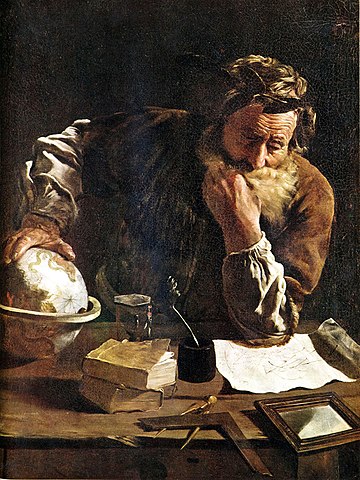
Archimedes is credited with the invention of the sciences of mechanics and hydrostatics. The laws of levers and pulleys wwhich he discovered is what allows us to move heavy items with small forces.
The center of gravity, one of the most fundamental principles in physics was first proposed by him.
John Logie Baird

John Logie Baird, a Scottish engineer, invented the first mechanical television, which could broadcast images of moving objects. In 1928, he also exhibited color television.
Alexander Graham Bell

Alexander Graham Bell is famously known for inventing the telephone, which he got a patent for in 1876.

Niels Henrik David Bohr was a Danish physicist who contributed to our understanding of atomic structure and quantum theory.
Rachel Carson

Rachel Carson was a well-known American biologist who focused on environmental pollution and the brief history of the sea.
Silent Spring, published in 1962, became one of the most significant books in the modern environmental movement, paving the way for stricter pesticide regulations.
Barbara McClintock

Barbara McClintock is best known for discovering genetic transposition, which is crucial to understanding genetics, biology and medicine.
James Chadwick

James Chadwick is the scientist who discovered neutrons, which are elementary particles devoid of charge,
Francis Crick

Francis Harry Compton Crick OM FRS was a molecular biologist, biophysicist, and neuroscientist. He, along with Rosalind Franklin and James Watson, helped decode the DNA molecule’s helical structure.
Marie Curie

Marie Curie is most known for discovering radium and polonium, as well as her significant contribution to cancer research.
She is the first woman to win the Nobel prize, in fact she won the Nobel prize twice – only woman to do so.

Democritus was a Greek philosopher best known for developing the atomic theory of the universe. This is especially revolutionary since he was able to decipher this around 420 BC.
Charles Drew

Charles Richard Drew was a surgeon and medical researcher who conducted research in the field of blood transfusions, establishing improved blood storage procedures, and applied his expert knowledge to develop large-scale blood banks.

Thomas Edison
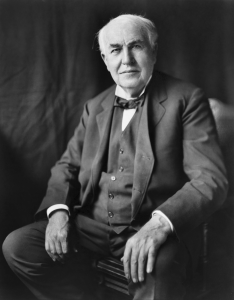
Thomas Alva Edison, widely considered as “America’s greatest inventor” is known for inventions such as the incandescent light bulb, the phonograph, and the motion picture camera, apart from improving the telephone and telegraph.
Albert Einstein

Albert Einstein was a German theoretical physicist who is regarded as one of the finest physicists of all time.
Although Einstein is best recognized for establishing the theory of relativity, he also contributed significantly to the development of quantum mechanics.
Michael Faraday

Michael Faraday FRS was an English scientist whose main discoveries were Electromagnetic induction, electrolysis and diamagnetism
Alexander Fleming

Sir Alexander Fleming was a Scottish microbiologist and physician who is best known for developing penicillin, the world’s first broadly effective antibiotic.
Rosalind Franklin

An English chemist and X-ray crystallographer, Rosalind Franklin’s work was pivotal to understand molecular structures of DNA, RNA and viruses.

Galileo Galilei who is regarded as the “Father of modern astronomy” made important contributions to astronomy and theoretical physics. His discovery of Jupiter’s 4 biggest moons as early as the 1610 was remarkable for the time.
Stephen Hawking

Stephen Hawking was a great modern theoretical physicist, with a brilliant five-decade career in science and astronomy. He has made many appearances in popular media and his lifelong battle against ALS is well documented.
Antoine Lavoisier

Lavoisier is regarded as the “father of modern chemistry”. He is most noted for his discovery of the role oxygen plays in combustion.
James Clark Maxwell

James Clerk Maxwell was the first person who described electricity, light and magnetism as different forms of the same phenomenon. He is responsible for the classical theory of electromagnetic radiation.
Isaac Newton

Isaac Newton is renowned for his discoveries in optics and mathematics (calculus), but he is best remembered for his formulation of the three laws of motion, which are the fundamental principles of contemporary physics.
Alfred Nobel

Alfred Nobel is well known for inventing dynamite, which revolutionized the usage of high explosives in the contemporary era. He was also the one who established the Nobel Prizes.
Louis Pasteur

French chemist and microbiologist – Louis Pasteur is renowned for his discoveries of the principles of vaccination and pasteurization.

In the 1970s and 1980s, Carl Sagan was perhaps one of the most famous scientists. He investigated alien intelligence, campaigned for nuclear disarmament, and co-wrote and produced the television show “Cosmos: A Personal Voyage.”
Nikola Tesla

Nikola Tesla , a Serbian-American engineer and scientist, made many inventions geared towards the application of electric power. He pioneered AC generation and transmission technologies and invented the first alternating current (AC) motor.
James Watson
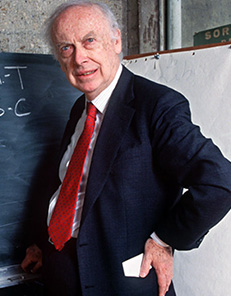
James Dewey Watson was an American geneticist and biophysicist who discovered the molecular structure of deoxyribonucleic acid (DNA), the substance that is the very basis of heredity.
Anders Celsius

Anders Celsius was born in Uppsala, Sweden, was a was a Swedish astronomer. He is popularly Known for inventing Celsius temperature scale.

Telescope is a device which is used to form magnified image of the distant objects, such as moon and stars. The first person to patent a telescope was Hans Lippershey, But Galileo in 1609 build his own telescope, making many improvement to Hans Lippershey’s design.
Read more about other scientists.

Benjamin Franklin Facts

Wright Brothers Facts

Neil Armstrong
More Science
- 5 fun and simple science experiments for kids

Leave a Comment
Famous Scientists
The world we live in today would no doubt be a different place if it weren't for the amazing discoveries produced by this list of famous scientists. Covering a broad range of scientific fields such as biology, physics, astronomy and chemistry, these men and women have pushed the world of science forward, allowing the human race to answer seemingly impossible questions while at the same time opening the door to new fields of research and discovery.
Scientists have changed our way of life more drastically than television stars, politicians or generals. Try and imagine a world without antibiotics, computers or engines. Science has also defined our place in the cosmos.
It has revealed that we share a common ancestor with all life on Earth and that we live on a small planet circling one of four hundred billion stars in the Milky Way galaxy, itself one of over two trillion galaxies in the observable Universe.
All too often we take science for granted, from the powerful computers we all carry in our pockets to medicines that can treat almost every illness.
Every now and then we should step back and take a few minutes to appreciate the people and ideas that have shaped the way we live and afforded us a better understanding of our lives and the world around us.
Charles Darwin 1809-1882
Authored one of the most famous books in history, On the Origin of Species , in which he described and provided evidence for the theory of evolution by natural selection.
Charles Darwin was born in England on the 12th of February 1809, he died on the 19th of April 1882.
He is most famous for his work on natural selection, the idea that all species of life have evolved over time from common ancestors. This process involves favorable traits becoming more common in successive generations of living things while at the same time unfavorable traits become less common.
Not only did Darwin develop the idea of natural selection, he also presented compelling evidence from his detailed research which included a five year voyage on the HMS Beagle. On this voyage, Darwin visited ecologically diverse regions such as Brazil, Chile, Australia, the Falkland Islands and the Galapagos Islands.
His 1859 book ‘On the Origin of Species’, detailed much of his research on natural selection, it contained a large amount of evidence to back up his ideas and became a landmark work in the field of evolutionary biology.
Darwin’s ideas created a lot of discussion regarding the impact on various scientific, religious and philosophical viewpoints. Although most of those in educated society accepted the theory of evolution, many still challenge its existence despite the wealth of evidence supporting it.
Although in later life Darwin suffered from a range of illnesses, he continued with his research and undertook new experiments to help support his ideas while at the same time forming new ones in other fields.
Other famous work by Charles Darwin includes: ‘The Expression of Emotions in Man and Animals’, ‘The Descent of Man, and Selection in Relation to Sex’, ‘The Power of Movement in Plants’ and ‘The Formation of Vegetable Mould Through the Action of Worms’.
Sir Isaac Newton 1643-1727
Profoundly changed our understanding of nature with his law of universal gravitation and his laws of motion; invented calculus, the field of mathematics that dominates the physical sciences; generalized the binomial theorem; built the first ever reflecting telescope; showed sunlight is made of all the colours of the rainbow.
Born in England, Isaac Newton was a highly influential physicist, astronomer, mathematician, philosopher, alchemist and theologian.
In 1687, Newton published Philosophae Naturalis Principia Mathematica, what is widely regarded to be one of the important books in the history of science. In it he describes universal gravitation and the three laws of motion, concepts that remained at the forefront of science for centuries after.
Newton’s law of universal gravitation describes the gravitational attraction between bodies with mass, the earth and moon for example.
Newton’s three laws of motion relate the forces acting on a body to its motion. The first is the law of inertia, it states that ‘every object in motion will stay in motion until acted upon by an outside force’. The second is commonly stated as ‘force equals mass times acceleration’, or F = ma. The third and final law is commonly known as ‘to every action there is an equal and opposite reaction’.
Other significant work by Newton includes the principles of conservation related to momentum and angular momentum, the refraction of light, an empirical law of cooling, the building of the first practical telescope and much more.
Newton moved to London in 1696 and took up a role as the Warden of the Royal Mint, overseeing the production of the Pound Sterling.
Newton was known to have said that his work on formulating a theory of gravitation was inspired by watching an apple fall from a tree. A story well publicized to this very day.
Famous Isaac Newton quotes include: "Plato is my friend - Aristotle is my friend - but my greatest friend is truth."
"If I have seen further it is only by standing on the shoulders of Giants."
"I can calculate the motions of the heavenly bodies, but not the madness of people."
"I do not know what I may appear to the world, but to myself I seem to have been only like a boy playing on the sea-shore, and diverting myself in now and then finding a smoother pebble or a prettier shell than ordinary, whilst the great ocean of truth lay all undiscovered before me."
"Truth is ever to be found in simplicity, and not in the multiplicity and confusion of things."
Albert Einstein 1879-1955
Albert Einstein was born on the 14th of March 1879 and died on the 18th of April 1955.
Born in Germany to a Jewish family, Einstein made many contributions to the field of theoretical physics.
Even when very young, Einstein showed great ability in both math’s and science. He was naturally curious and had a brilliant analytical mind.
Einstein worked in a patent office evaluating patents for electromagnetic devices not long after he graduated.
He produced perhaps one of the most famous equations ever: E = mc² (energy equals mass multiplied by the speed of light squared).
He is also well known for his theory of relativity. Special relativity being introduced in his 1905 paper “On the Electrodynamics of Moving Bodies” before Einstein developed the theory of general relativity between the years of 1907 and 1915.
Einstein won the 1921 Nobel Prize in Physics for his work on theoretical physics.
He worked on many other influential theories and projects including: the deflection of light by gravity, the quantum theory of atomic motion in solids, Brownian motion, an explanation for capillary action and much more.
Famous Albert Einstein quotes include: "Whether you can observe a thing or not depends on the theory which you use. It is the theory which decides what can be observed."
"If I were not a physicist, I would probably be a musician. I often think in music. I live my daydreams in music. I see my life in terms of music.... I do know that I get most joy in life out of my violin."
"Physical concepts are free creations of the human mind, and are not, however it may seem, uniquely determined by the external world."
"I am enough of an artist to draw freely upon my imagination. Imagination is more important than knowledge. Knowledge is limited. Imagination encircles the world."
Marie Curie 1867-1934
Co-discovered the chemical elements radium and polonium; made numerous pioneering contributions to the study of radioactive elements; carried out the first research into the treatment of tumors with radiation.
Marie Curie was a chemist and physicist famous for becoming the first person to be awarded two Nobel Prizes. She was brought up in Poland before eventually moving to France and obtaining French citizenship.
After French physicist Henri Becquerel first discovered a strange source of energy coming from uranium (radioactivity), Marie Curie decided that this would make a good field for research. With the help of her husband and his vital electrometer, she made numerous scientific discoveries including showing that radiation did indeed come from the atom itself rather than an interaction between molecules.
In 1911 Marie Curie was awarded another Nobel Prize, this time in Chemistry, for her discovery of radium and polonium and subsequent research.
In 1932 Marie Curie founded the ‘Radium Institute’ in Warsaw, Poland. The name was changed after World War II to the ‘Maria Sk?odowska-Curie Institute of Oncology’. The institute carries out specialized cancer research and treatment.
Famous Marie Curie quotes include: “We must not forget that when radium was discovered no one knew that it would prove useful in hospitals. The work was one of pure science. And this is a proof that scientific work must not be considered from the point of view of the direct usefulness of it. It must be done for itself, for the beauty of science, and then there is always the chance that a scientific discovery may become like the radium a benefit for humanity.”
“One never notices what has been done; one can only see what remains to be done.”
Thomas Edison 1847-1931
Thomas Alva Edison was an American inventor and businessman who has been described as America's greatest inventor. He developed many devices in fields such as electric power generation, mass communication, sound recording, and motion pictures. These inventions, which include the phonograph, the motion picture camera, and early versions of the electric light bulb, have had a widespread impact on the modern industrialised world.
- Edison was born on February 11, 1847 in the small village of Milan, Ohio, the youngest of seven children.
- Edison was mostly homeschooled by his mother.
- Edison became a salesman of fruit, paper and other goods on the Grand Trunk Railroad at the age of 12.
- From 1870 to 1875 Edison devised many telegraphic advances including receivers, transmitters, the duplex, tape and automatic printers. He also collaborated in 1871 with Christopher Sholes, known as “father of the typewriter.”
- Probably his most impressive invention, the phonograph, for the mechanical recording and reproduction of sound, was patented in 1877. The Edison Speaking Phonograph Company was established in early 1878.
- Edison invented the first practical incandescent lamp in 1879. With months of hard work researching metal filaments, Edison and his staff analyzed 6,000 organic fibers around the world and determined that the Japanese bamboo was ideal for mass production. Large scale production of these cheap lamps turned out to be profitable. He later patented the first fluorescent lamp in 1896.
- The kinetograph, his motion picture camera, photographed action on 50-foot strips of film, and produced sixteen images per foot. Edison built a small movie production studio in 1893 called the “Black Maria,” which made the first Edison movies. The kinetoscope projector of 1893 displayed the films. The earliest commercial movie theater, a peepshow, was established in New York in 1884.
- The Edison Company created over 1,700 movies. Edison set the benchmark for talking pictures in 1904 by synchronizing movies with the phonograph.
Carolus Linnaeus 1707-1778
Organized our view of the natural world with the two-part naming system we use to classify all lifeforms; named and classified about 13,000 lifeforms; broke with tradition by classifying humans in the same way as other lifeforms.
- Carl Linnaeus was born on May 23, 1707 in the village of Råshult in southern Sweden. His father was Nils Ingemarsson Linnaeus, a church minister and amateur botanist; and his mother was Christina Brodersonia.
- His father believed that the best thing he could offer his children was a solid education and, in addition to botany, taught Carl about religion and to speak Latin before he could walk.
- By the end of his secondary schooling, his teachers had formed the opinion that he was not bright enough to go to university. His immense interest in and knowledge of botany were ignored – it was not a ‘proper subject.’ His teachers expected their students to be skillful in Greek, Hebrew, mathematics and theology, but Carl was not especially interested in these subjects.
- Fortunately, one of his school teachers, Johan Rothman, who was also a medical doctor, recognized the boy’s talents and advised his father that Carl should aim for a career in medicine. Carl moved into the Rothman family home, where Rothman gave him formal lessons in anatomy and physiology as well as botany.
- By the age of 21, Linnaeus was ready for university.
- In 1730, aged just 23, Linnaeus became a botany lecturer at Uppsala University.
- In 1732 he was awarded funding for an expedition to Lapland, in the far north of Sweden.
- From May to October that year the 25 year old botany lecturer traveled 1250 miles (2000 km) in Lapland, making observations of the native plants and birds.
- He wrote a book about Lapland’s plants called Flora Lapponica , describing his new discoveries. He also started using a two-part naming system – which would eventually become the Linnaean or binomial system, used worldwide to name living things.
- It also came to him that he could use his new system to name animals as well as plants.
- In the Netherlands Linnaeus met Johan Frederik Gronovius, a Dutch botanist. He showed Gronovius his recent writings on the classification and naming of plants. Linnaeus had replaced some very lengthy plant names with logical, much shorter, two-part names. Gronovius saw that Linnaeus’s work could transform botany.
- Over the years, Linnaeus continued to develop his ideas and add new species so that Systema Naturae grew in a period of about 30 years from 12 outsize pages in its first edition to 2400 pages in its twelfth edition. This was the first serious attempt ever made to document all of our planet’s species. It was a huge effort: Linnaeus took the apparently chaotic natural world and organized it, making it easier for everyone to understand it.
- The classification of lifeforms is called taxonomy . Linnaeus classified living things by looking for similarities. For example he would look at the teeth of different mammals to decide if they were related. In modern times, DNA is used to classify lifeforms. In the case of fossils, where no DNA is present, scientists still use similarities between fossils – and between fossils and current lifeforms – to classify them.
- Linnaeus was not a modest man. He was well-aware of his achievements, and in later life, he wrote of himself: “No one has been a greater botanist or zoologist. No one has written more books, more correctly, more methodically, from personal experience. No one has more completely changed a whole science and started a new epoch.”
Alexander Fleming 1881-1955
Alexander Fleming discovered penicillin, whose use as an antibiotic has saved untold millions of lives.
- Alexander Fleming was born on August 6, 1881 at his parents’ farm located near the small town of Darvel, in Scotland, UK.
- His parents, Hugh Fleming and Grace Stirling Morton, were both from farming families. His father’s health was fragile; he died when Alexander was just seven years old.
- Alexander’s earliest schooling, between the ages of five and eight, was at a tiny moorland school where 12 pupils of all ages were taught in a single classroom.
- Darvel School was Alexander’s next school, which involved an eight-mile round trip on foot every school-day. At the age of 11 his academic potential was recognized and he was awarded a scholarship to Kilmarnock Academy, where he boarded for about two years before leaving for London.
In 1901, at the age of 20, he inherited some money from his uncle, John Fleming. He decided to use the money to go to medical school; he wanted to become a doctor like his successful brother Tom.
First, he needed suitable qualifications to enable him to enroll at medical school. This did not present any great difficulties; he passed his exams with the highest marks of any student in the United Kingdom.
- Rather than follow in Tom’s footsteps, Alexander was persuaded by Almroth Wright, an authority in immunology, to become a researcher in his bacteriology group at St Mary’s Hospital Medical School. While carrying out this research Fleming graduated, in 1908, with a degree in bacteriology and the Gold Medal for top student. St Mary’s Hospital Medical School then promoted him to the role of bacteriology lecturer.
- Almroth Wright was interested in our bodies’ natural ability to fight infection. Fleming became particularly fascinated by the fact that although people suffer bacterial infections from time to time, our natural defenses usually prevent infections from taking hold.
- In 1914 World War 1 broke out and Fleming, age 33, joined the army, becoming a captain in the Royal Army Medical Corps working in field hospitals in France.
- There, in a series of brilliant experiments, he established that antiseptic agents used to treat wounds and prevent infection were actually killing more soldiers than the infections were!
The antiseptics, such as carbolic acid, boric acid and hydrogen peroxide, were failing to kill bacteria deep in wounds; worse, they were in fact lowering the soldier’s natural resistance to infection because they were killing white blood cells.
Fleming demonstrated that antiseptic agents were only useful in treating superficial wounds, but were harmful when applied to deep wounds.
Almroth Wright believed that a saline solution – salt water – should be used to clean deep wounds, because this did not interfere with the body’s own defenses and in fact attracted white cells. Fleming proved this result in the field.
In the month of August 1928, Fleming did something very important. He enjoyed a long vacation with his wife and young son.
On Monday, September 3, he returned to his laboratory and saw a pile of Petri dishes he had left on his bench. The dishes contained colonies of Staphylococcus bacteria. While he was away, one of his assistants had left a window open and the dishes had become contaminated by different microbes.
A fungus was growing and the bacterial colonies around it had been killed. Farther from the fungus, the bacteria looked normal.
Fleming now devoted himself to growing more of the fungus. He identified that it belonged to the Penicillium genus and that it produced a bacteria-killing liquid. On March 7, 1929 he formally named the antibiotic penicillin .
Fleming published his results, showing that penicillin killed many different species of bacteria, including those responsible for scarlet fever, pneumonia, meningitis, and diphtheria. Furthermore, penicillin was non-toxic and it did not attack white blood cells.
In 1944 Fleming was knighted and became Sir Alexander Fleming.
Stephen Hawking 1942 - 2018
Stephen Hawking is one of the most famous scientists of modern times. Despite his challenging physical impairments, he has contributed much to the world of science, helping spread his ideas to the general public with the release of accessible books such as ‘A Brief History of Time’. Read on for interesting facts, quotes and information about Stephen Hawking.
Stephen Hawking is a British theoretical physicist, he was born on January the 8th, 1942.
Hawking has made many important contributions to the fields of cosmology and quantum gravity. He is also well known for his bestselling book ‘A Brief History of Time’.
Helped by the success of his book ‘A Brief History of Time’, Hawking has released other books aimed at making his work accessible to a wide range of people, these include ‘The Universe in a Nutshell’, ‘A Briefer History of Time’ and ‘George's Secret Key to the Universe’, a children’s book with a strong focus on science.
Hawking has worked extensively on the subject of black holes, providing theories for their behavior, including the idea that they emit radiation.
Hawking suffers from amyotrophic lateral sclerosis, a type of motor neuron disease that has left him almost completely paralyzed.
Some of the awards Hawking has received for his work include the 1979 Albert Einstein Medal, the Order of the British Empire (Commander) in 1982 and the 1988 Wolf Prize in Physics.
Famous Stephen Hawking quotes include: “There ought to be
something very special about the boundary conditions of the universe and what can be more special than that there is no boundary?”
“I don't believe that the ultimate theory will come by steady work along existing lines. We need something new. We can't predict what that will be or when we will find it because if we knew that, we would have found it already!”
“For millions of years, mankind lived just like the animals. Then something happened which unleashed the power of our imagination. We learned to talk and we learned to listen.”
“It is a waste of time to be angry about my disability. One has to get on with life and I haven't done badly. People won't have time for you if you are always angry or complaining.”
“I don't think the human race will survive the next thousand years, unless we spread into space. There are too many accidents that can befall life on a single planet. But I'm an optimist. We will reach out to the stars.”
Jane Goodall Born 1934 - Present Day
Ground breaking discoveries in chimpanzee behaviour; established that chimpanzees have similar social behavior to humans and also that they make tools and hunt for meat.
Born on the 3rd of April 1934, Jane Goodall is a British primatologist, ethologist and anthropologist.
Goodall established the Jane Goodall Institute in 1977, it supports research while actively running a range of conservation programs to protect chimpanzees and the environment.
Goodall studied chimpanzees in great detail, learning how they lived in groups, problem solved and interacted with their environment. She discovered that chimpanzees had the mental capacity to not only use simple tools but to actually make them as well, something that was previously thought to be uniquely human.
Unlike most researchers, Goodall named the animals that were part of her studies, normally numbers were assigned in order to remove the possibility of the researcher becoming attached to the subjects. Her unique methods stood out and were at times subject to criticism.
Goodall’s work is similar to that of Dian Fossey, a famous American zoologist who completed a long study of Gorillas in Rwanda, releasing a book titled ‘Gorillas in the Mist’ which later went on to become a well known movie.
Goodall is a strong supporter of animal rights and has been part of many animal rights organizations. She was the president of Advocates for Animals from 1998 to 2008.
Goodall has been awarded many honors for her tireless work. These include the Kyoto Prize, the Benjamin Franklin Medal in Life Science, the Rainforest Alliance Champion Award, The Primate Society of Great Britain Conservation Award, as well as being named as a United Nations Messenger of Peace in 2002.
Joseph Rotblat 1908-2005
Joseph Rotblat left the Manhattan Project, the US programme to build the first atomic bomb, to campaign for disarmament, eventually winning the Nobel Peace Prize.
When Joseph Rotblat was awarded the Nobel Peace Prize in 1995, 50 years had passed since the atom bombs were dropped on Hiroshima and Nagasaki. But it was 52 years since Joseph Rotblat had first taken a stance against the development of the new weapons of mass destruction. In his opinion, science and research should serve the cause of peace.
Of Jewish descent, Rotblat was born in Warsaw, Poland. He studied physics and took up research in Great Britain in 1939. His work on splitting the atom led him to the conclusion that it was possible to produce an atomic bomb. In 1943 he was given permission to withdraw from the Manhattan Project, in which the United States and Great Britain were cooperating on the production of nuclear weapons. To Rotblat it was clear that Germany would not manage to make an atomic bomb before the war was over. He also feared that nuclear weapons might be used in a clash with the communist Soviet Union.
During the post-war period, Joseph Rotblat has done an enormous amount of work in the cause of peace, dialogue and disarmament through the Pugwash movement, with which he shared the Nobel Peace Prize in 1995.
Like a minority of the scientists involved, he was concerned then about the morality of working on a weapon of mass destruction, but convinced himself that the apparent danger of a German bomb justified it. However, unlike those other scientists, as soon as this danger had clearly disappeared he left the project and returned to Liverpool University to resume his post as a lecturer, and then senior lecturer, in the physics department and director of research into nuclear physics.
In 1950 he became professor of physics at London University's St Bartholomew's Hospital Medical College. He remained in the post until 1976 - then becoming emeritus professor. During those years his professional career was devoted to the application of nuclear physics to medicine.
Rotblat wrote or edited more than two dozen books and scores of papers, culminating in the 1995 Nobel lecture - a powerful and moving exposition of the continuing danger to the world of the existence of nuclear weapons. In it he appealed to the nuclear powers to abandon cold-war thinking, to his fellow scientists to remember their responsibility to humanity, quoting the last passage of the Russell-Einstein Manifesto: "We appeal, as human beings to human beings. Remember your humanity and forget the rest. If you can do so, the way lies open for a new paradise; if you cannot there lies before you the risk of universal death."
Alan Turing 1912-1954
In recent years we have come to know more about Alan Turing. He has become the subject of a Hollywood film and adorns the £50 note.
He is perhaps most famous for his code-breaking work that helped win the Second World War but he has also been referred to as the father of modern computing. He also almost represented Team GB at the 1948 Olympics.
- Turing studied quantum mechanics, a very new field, probability, and logic theory at King’s College, Cambridge.
- In the years leading up to open hostilities in World War II, he was secretly working in government crypto-analysis. When England entered the war, he took on the full-time task of deconstructing the operation of the German Enigma machine. This cipher generator of immense complexity allowed the Germans to create apparently unbreakable codes.
- Turing embraced this cryptography challenge, creating a decryption machine specifically aimed at Enigma, named the Bombe.
- Enigma’s unraveling was a several year process that achieved success in 1942. Information gleaned from decoded German messages permitted the Allies to anticipate U-Boat deployment, thereby winning the battle of the Atlantic.
- At war’s end, he joined the National Physical Laboratory to try to invent a digital computer, or thinking machine. To that end, he studied neural nets and tried to define artificial intelligence. Disappointed by the reception his ideas received at the NPL, he moved to Manchester University. His department unveiled the first practical mathematical computer in 1949.
Professor Brian Cox 1968 - Present Day
The pop idol turned science idol, Professor Brian Edward Cox is a British physicist and professor of particle physics at the University of Manchester. He is best recognized as the presenter of science programs for the British Broadcasting Corporation (BBC). He is known for bringing science to a wider audience through these programs, especially in physics and astronomy.
Cox was born on 3 March 1968 in the Royal Oldham Hospital, later living in nearby Chadderton from 1971.
He attended the independent Hulme Grammar School in Oldham from 1979 to 1986.
He applied to do his first physics degree at Manchester at the relatively late age of 23. Before that he was a budding rock star with a band called Dare and then Cox played keyboards for the band D:Ream, whose single "Things Can Only Get Better" hit number one in 1994, and subsequently became New Labour's anthem.
His first-class physics degree allowed him to study for a PhD and become a full-time academic and television presenter. His breakthrough as a professional science communicator came with his first TV series, Wonders of the Solar System, which attracted five million viewers. He also fronts a live show with science comedian Robin Ince, which has drawn capacity crowds at venues usually reserved for rock concerts.
Cox studied physics at the University of Manchester during his music career. He earned a Bachelor of Science degree with first class honours. After D:Ream disbanded in 1997, he completed his Doctor pf Philosophy degree in high-energy particle physics at the University of Manchester. His thesis, Double Diffraction Dissociation at Large Momentum Transfer , was and based on research he did on the H1 experiment at the Hadron Elektron Ring Anlage HERA particle accelerator. Cox is now professor of physics at Manchester University, where he undertakes experiments in particle physics at the Cern laboratory near Geneva.
- Skip to primary navigation
- Skip to main content
- Skip to primary sidebar

- FREE Experiments
- Kitchen Science
- Climate Change
- Egg Experiments
- Fairy Tale Science
- Edible Science
- Human Health
- Inspirational Women
- Forces and Motion
- Science Fair Projects
- STEM Challenges
- Science Sparks Books
- Contact Science Sparks
- Science Resources for Home and School
Activities for Learning About Famous Scientists
June 14, 2021 By Emma Vanstone 3 Comments
My 10 year old is currently reading a book called 101 People Who Made History . When flicking through I found myself naturally drawn to the many amazing famous scientists who have helped make the world what it is today with their hard work, sheer determination and passion for science and technology.
I’ve collected a few activities and simplified experiments linked to famous scientists to help children understand the concepts these inspirational people discovered.
Famous Scientist Experiments
Galileo galilei (1564 to 1642), leonardo da vinci, caroline hershel, isaac newton, charles darwin, mary anning, louis pasteur, joseph lister, florence nightingale, wilhelm roentgen, marie curie, ernest rutherford, watson and crick, rosalind franklin, ada lovelace, marie m. daly.
Galileo was an astronomer, physicist, mathematician and inventor. He built his own telescope, which allowed him to discover features of the surface of our moon and the moons of Jupiter!
When Galileo was alive, many people thought that the Earth was at the centre of the Universe, Galileo explained that the Earth orbits the sun (also stated by Copernicus ), a theory that got him into lots of trouble with the church. You can demonstrate this easily using our Sun, Earth and Moon demonstration.
One of Galileo’s most famous observations was that two same size objects of different weights hit the ground at the same time when dropped from the same height. This is because the force of gravity acting on both objects is the same. You can test this by dropping two identical water bottles from the same height. Empty one bottle and leave the other half full. You should find that if you drop them from the same height, they hit the ground at the same time.
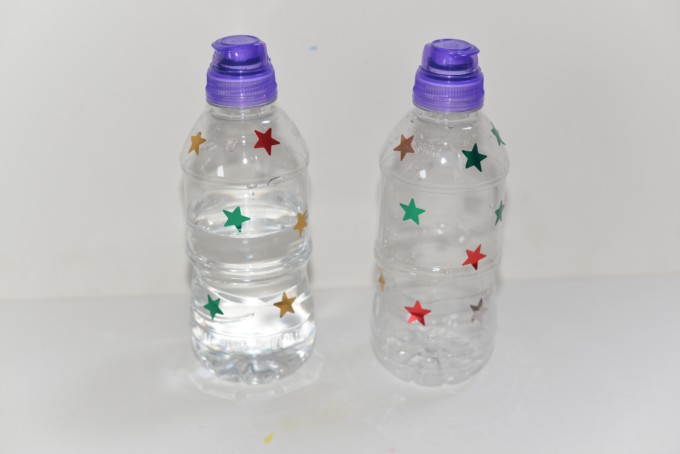
Nicolaus Copernicus was an astronomer born in 1473 who realised that the Earth orbits the Sun, an idea strongly opposed at the time.
Copernicus’s model, Heliocentrism, involves the Sun being motionless at the centre and other planets rotating around it. Copernicus’s ideas marked the beginning of modern astronomy.
Can you create a model of the solar system showing the planets orbiting the Sun , make a solar system magnet maze, or paper plate model of the solar system ?

Italian Renaissance Man Leonardo Da Vinci created some of the world’s most famous art works, including the Mona Lisa and Last Supper, but he was not just an artist. Leonardo Da Vinci was also a scientist who studied anatomy, geology and flight. He kept journals full of drawings of the different subjects he was studying and often wrote his notes using a kind of shorthand he invented himself. He also mirrored his writing, writing from right to left.
See if you can mirror your handwriting …how hard is it? Use a mirror to help.

Caroline Herschel was the first woman to discover a comet, the first woman officially recognised in a scientific position to receive a salary, and the first woman to receive honorary membership into Britain’s Royal Society.
She made a huge contribution to the field of astronomy in her lifetime, both independently and alongside her brother, William Herschel.
You can learn about the structure of a comet by making a simple comet model .

As well as figuring out why objects fall to the ground and why planets orbit the Sun, Isaac Newton showed that white light is actually made up of a range of colours and used a prism to show this. Did you know the Hubble Space Telescope is based on Newton’s reflecting telescope design?
You can split white light into all the colours of the rainbow by shining a torch through a prism in a dark room. Or, you can get the same effect by blowing bubbles outside. When white light shines through the film of the bubbles, it is reflected and dispersed, splitting white light into its different wave lengths and showing all the colours.

Isaac Newton also created the Laws of Motion. One brilliant way to demonstrate all three laws is to make a film canister rocket .

Charles Darwin showed that life on Earth results from millions of years of gradual changes, a theory we call Evolution by Natural Selection . This means that animals best suited to their environment are more likely to survive and pass those features on to their offspring.
Darwin made many of his discoveries while on a 5 year voyage on a ship called HMS Beagle. He collected samples, fossils and made observations.
You can make your own fossils using clay and small toys.

This activity would also be great for learning about Mary Anning .
Mary was a fossil hunter who helped find some of the first dinosaur bones. Mary’s work helped scientists form the theory of Evolution.
Mary faced many difficulties and obstacles in her life and career. She was from a poor family with no formal education, which meant she couldn’t join scientific societies or attend university lectures, and she wasn’t always fully credited for her findings.
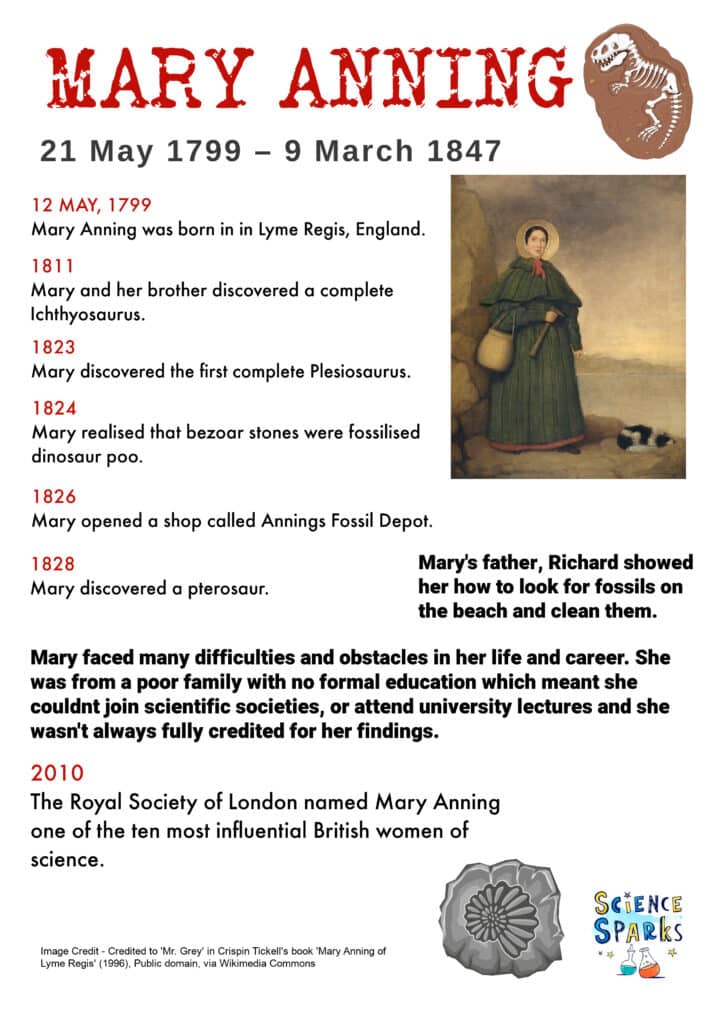
Louis Pasteur was a French Chemist who found that bacteria cause harmful diseases. He also discovered that bacteria can be killed by boiling, a process we call Pasteurisation .
You can see the effect bacteria and other micro-organisms have on food by leaving them in different conditions and observing what happens. We placed apple segments in vinegar, salt, water, and air, and we got some interesting results.

Joseph Lister was a British doctor who believed that germs from dirty equipment and people not washing their hands were causing infections in patients after operations. He found that sterilising equipment and using antiseptics ( substances which prevent or slow the growth of microorganisms) drastically reduced the infection rate.
You can see how easily microorganisms spread between people by putting a little glitter and hand cream on your hand and then shaking hands with someone else. You should find that the glitter spreads to their hand, too. Keep shaking hands with people. How many can you infect with your glitter germs?
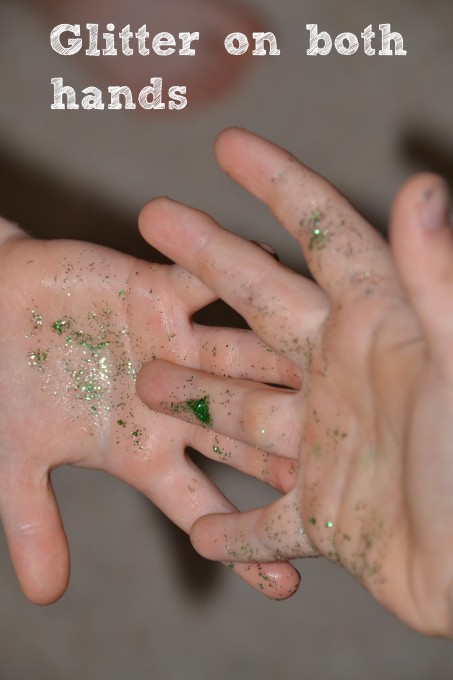
This is also a great activity to sit alongside, learning about Florence Nightingale .
Florence is considered to be the founder of modern nursing . The soldiers she cared for during the Crimean War called her The Lady with the Lamp as she worked all night looking after them.
Florence was the first woman to be given the Order of Merit, the first woman to become a member of the Royal Statistical Society ( because of her skills with numbers and presenting data ), and the first woman to receive The Royal Red Cross .

Wilhelm Roentgen was a German physicist who discovered X-rays. You can learn about X-rays and how they are used to detect broken bones with these easy bone themed science activities .
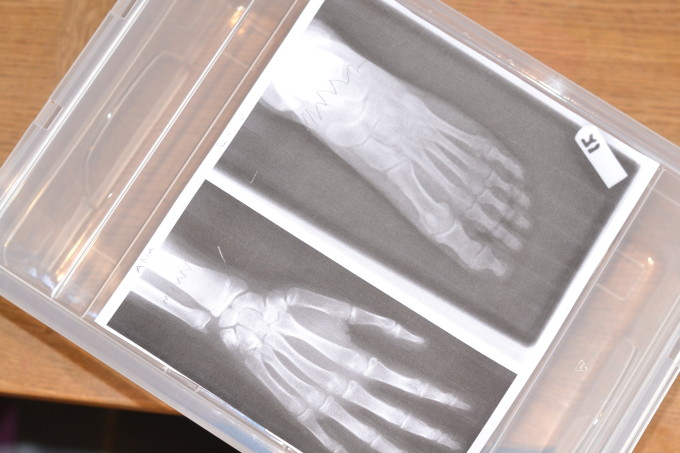
Marie Curie was the first woman to win a Nobel Prize. She discovered two new radioactive elements and realised that radiation could be used to treat human diseases. Marie used her knowledge to improve X-ray machines and created one small enough to fit in an ambulance.
Check out my Marie Curie Fact File and ideas for celebrating her achievements.
Ernest Rutherford discovered the structure of the atom, figuring out that most of an atom’s mass is at its centre ( nucleus ), with the rest being mostly empty space. Rutherford also found that the nucleus could be broken apart if struck by another high-energy particle. He created a new science known as nuclear physics.
Kids Activities Blog has a great activity where they show you how to make a model of an atom .
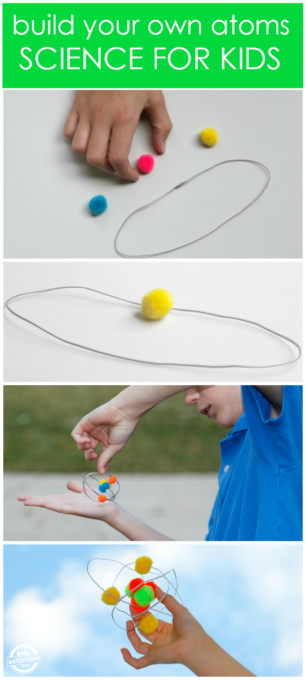
James Watson and Francis Crick worked together at Cambridge University studying the structure of DNA. They discovered that DNA ( Deoxyribonucleic Acid ) consists of two strands twisted together in a double helix.
Rosalind Frankli n and Maurice Wilkins also contributed to this groundbreaking discovery.
Did you know you can easily extract DNA from strawberries ? Steve Spangler shows you how.
You can also learn about the structure of DNA with our easy candy DNA model .

Find out more about the inspirational Rosalind Franklin with my FREE Rosalind Franklin Fact File .
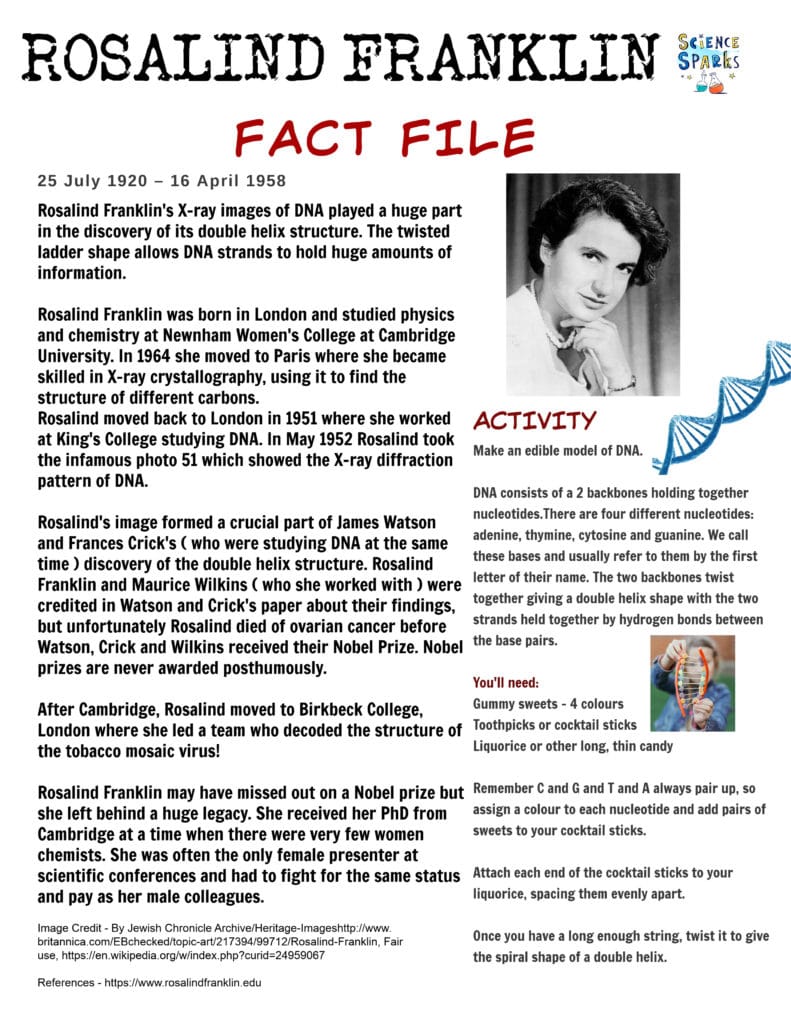
Read more about the women who wrote the first computer program and try some simple coding with my free Ada Lovelace Fact File .
Marie Daly was an American biochemist and the first African-American woman to receive a Chemistry PhD in the United States. Marie’s incredible work led to a new understanding of how diet affects the human circulatory system .
Download my Marie M. Daly Fact File and make a model of a pumping heart.
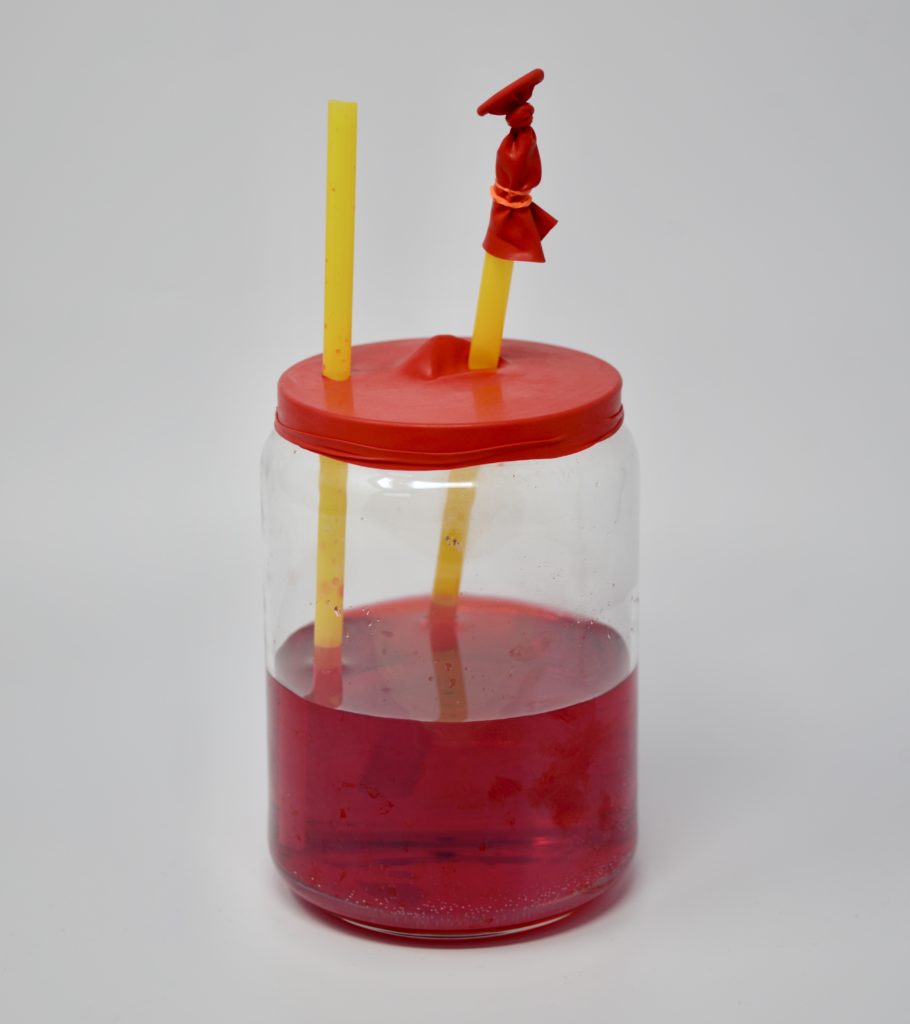
Cai Lun invented paper in 105! He used the soft inner bark of a mulberry tree, bamboo fibres and water. After mixing, he poured the mixture over a cloth and let the water drain away. When the mixture dried, it left behind paper! The invention of paper allowed discoveries to be recorded and spread much more quickly.
The process isn’t the same as that invented by Cai Lun, but Babble Dabble Do has a great paper making activity you can try.
Archimedes was a brilliant mathematician, astronomer and inventor who lived in the 3rd century BCE. He worked out the value of pi, famously discovered that an object displaces its own volume of water in a bathtub and invented a simple pump machine that is still used today! One way to learn more about Archimedes is to make your own Archimedes Screw !
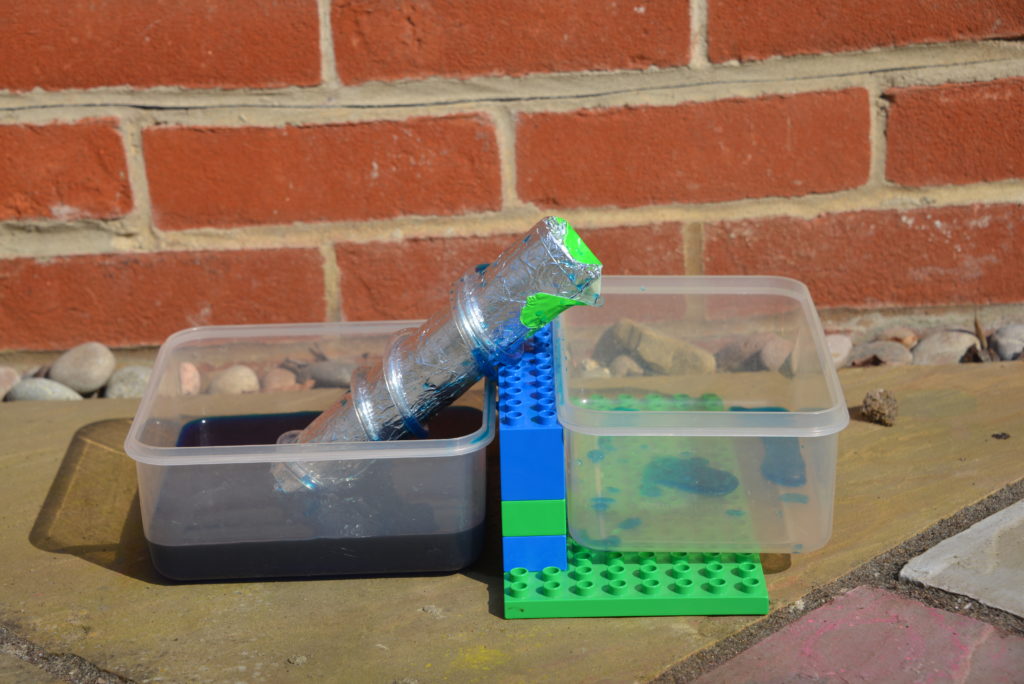
I’m going to keep adding famous scientists to this list, so do keep popping back.
Contains affiliate links

Last Updated on May 23, 2024 by Emma Vanstone
Safety Notice
Science Sparks ( Wild Sparks Enterprises Ltd ) are not liable for the actions of activity of any person who uses the information in this resource or in any of the suggested further resources. Science Sparks assume no liability with regard to injuries or damage to property that may occur as a result of using the information and carrying out the practical activities contained in this resource or in any of the suggested further resources.
These activities are designed to be carried out by children working with a parent, guardian or other appropriate adult. The adult involved is fully responsible for ensuring that the activities are carried out safely.
Reader Interactions
August 30, 2018 at 9:40 pm
I’m a middle-grade teacher and just discovered this site. I LOVE IT!
November 10, 2018 at 4:13 am
Watson and Crink whilst given the credit for their DNA study, would not have got to their conclusions so quickly had it not been for Rosalind Franklin. Dr Franklin had her photo of DNA stolen by her lab partner (Maurice Wilkins) who then partnered with Crink and Watson. Photo 51 was taken in 1952. Watson and Crink published their DNA model in 1953 thanks to the help of Franklin’s now famous photo. Franklin died of cancer in 1958 never knowing that her photo had been stolen. Watson, Crink and Wilkins won their 1962 Nobel Prize because of her help but sadly she was never recognized for her contribution.
February 27, 2021 at 10:25 pm
my kids are only 3months old and 17 months old and im already looking for ways to get them into science. Thank you so much!
Leave a Reply Cancel reply
Your email address will not be published. Required fields are marked *
- International
- Education Jobs
- Schools directory
- Resources Education Jobs Schools directory News Search

Lessons on Famous Scientists UKS2
Last updated
26 February 2024
- Share through email
- Share through twitter
- Share through linkedin
- Share through facebook
- Share through pinterest
Resources included (4)

Isaac Newton Powerpoint & Plan KS2 lesson

Spencer Silver Year 5 Science Lesson Plan and Powerpoint

Jane Goodall Science Plan Powerpoint

Ruth Benerito Year 5 Science Plan and Powerpoint
Four lessons on famous scientists for a KS2 class. Each lesson comes with an engaging PowerPoint, video link, a detailed plan and all the paper resources necessary. Variety of tasks, experiments, discussions and written work. Differentiated for 3 ability groups and further challenges provided.
Written for a year 5 class, easily adaptable for other KS2 classes. Focuses on the new curriculum learning objectives, linking to the science topics of Forces, Life Cycles, Materials and Changing States.
Each lessons has an interactive and engaging powerpoint full of information and helpful video links.
Mixture of paired, group and independent tasks.
Differentiated activities for a range of abilities and support sheets.
Extension challenges for children to move onto.
Interesting plenaries to discuss.
Long detailed lessons, you could easily spread out some to two lessons so you have enough for a 6 week term.
All reviews welcome.
Tes paid licence How can I reuse this?
Your rating is required to reflect your happiness.
It's good to leave some feedback.
Something went wrong, please try again later.
This resource hasn't been reviewed yet
To ensure quality for our reviews, only customers who have purchased this resource can review it
Report this resource to let us know if it violates our terms and conditions. Our customer service team will review your report and will be in touch.
Not quite what you were looking for? Search by keyword to find the right resource:

COMMENTS
as part of a science topic that relates to the work of the scientist. as stand-alone fifteen-minute discussion activities. with a small group or the whole class, or in a whole school assembly. The A Scientist Just Like Me resource was created by PSTT Fellows, Kulvinder Johal, Alison Trew and Ali Eley during 2021. Acknowledgements.
Stephen Hawking was a great modern theoretical physicist, with a brilliant five-decade career in science and astronomy. He has made many appearances in popular media and his lifelong battle against ALS is well documented. Antoine Lavoisier. Lavoisier is regarded as the "father of modern chemistry". He is most noted for his discovery of the ...
2300 BC: The first counting machine, an abacus, is invented. 384 BC - 322 BC: Aristotle was an ancient Greek philosopher who laid the foundation for many areas of science such as biology, philosophy of science and physics. 276 -194 BC: Eratosthenes is alive during this time. He's known for inventing the system of longitude and latitude, making ...
Albert Einstein 1879-1955. Albert Einstein was born on the 14th of March 1879 and died on the 18th of April 1955. Born in Germany to a Jewish family, Einstein made many contributions to the field of theoretical physics. Even when very young, Einstein showed great ability in both math's and science.
Darwin made many of his discoveries while on a 5 year voyage on a ship called HMS Beagle. He collected samples, fossils and made observations. You can make your own fossils using clay and small toys. Dinosaur fossils. This activity would also be great for learning about Mary Anning.
This research sheet allows children to pick a famous scientist and write about them. Children will research facts about their early life, their career as a scientist as well as interesting facts about them. Twinkl Twinkl Ireland Resources English Medium Schools 5th/6th Class SESE Science. Sign in to leave a review.
Taxonomy is the science of naming, describing and grouping all living things. Scientists have improved classification of organisms over time as they've been able to make more accurate observations. Carl Linnaeus is most famous for creating a system of naming living things. His ideas on classification have influenced generations of biologists ...
Ruth Benerito Year 5 Science Plan and Powerpoint. Four lessons on famous scientists for a KS2 class. Each lesson comes with an engaging PowerPoint, video link, a detailed plan and all the paper resources necessary. Variety of tasks, experiments, discussions and written work. Differentiated for 3 ability groups and further challenges provided.
Download this handy KS2 Significant Scientist Fact File Template Pack for children to research all about these important individuals over time. With a range of significant scientists, including David Attenborough, Mae Jemison and Alfred Wallace, children are sure to be able to select the scientist that has inspired them the most. This handy pack has all of the important people in one place!
Key learning points. Mary Anning was a famous palaeontologist, known as one of the greatest fossil hunters to have ever lived. Male scientists at the time often did not credit her discoveries because she was a woman from a poor background. Today the Natural History Museum in London showcases several of Mary Anning's spectacular finds.